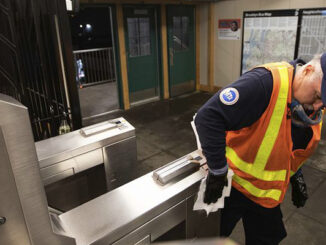
by Jennifer Najera
In immigrant rights circles, it is common to hear the phrase “abolish ICE,” a sentiment that has grown stronger with every new abuse.
A whistleblower recently filed a complaint about a gynecologist in Georgia performing hysterectomies on migrant women in the custody of Immigration and Customs Enforcement without fully informed consent. Women from the same immigration detention center in Georgia have also reported being subjected to unnecessary gynecological procedures.
These are alarming allegations, but in some ways not entirely unexpected with an agency where negligence and cruelty are a daily occurrence. We should understand that ICE’s mission, rooted in anti-terrorist efforts, is bound to produce inhumane treatment of migrants unless it dramatically changes course.
I’ve been studying Mexican immigration for the last two decades, and over this time I’ve seen migrants increasingly treated as criminals subject to humiliation and brutality.
For most of the 20th century, it was the Immigration and Naturalization Service that policed the border, periodically showing force in workplace and community raids that led to deportation. At other moments in this history, INS agents worked with employers to selectively enforce border policy, ensuring that there were sufficient Mexican laborers to keep the agricultural industry afloat.
The ebb and flow of border enforcement and deportation began to change in the late 1990s with initiatives to increase the militarization of the border. After the Sept. 11 attacks, U.S. immigration policy shifted dramatically. In 2003, when the INS was replaced by the Department of Homeland Security and its agencies — ICE, Customs and Border Protection, and U.S. Citizenship and Immigration Services — immigration issues were folded into a new mission of national security: the removal of “criminal aliens.”
Migrants who had been coming from Mexico for generations to work were now being treated as suspected criminals. We saw this most acutely in late 2005 when the House of Representatives passed HR 4437, which, if passed by the Senate, would have made it a felony to reside in this country without papers. The bill led to some of the biggest immigration marches in the country, with protesters carrying signs that read, “We Are Workers, Not Criminals” and “Immigrants Are America’s Workers.”
Migrant detention, which barely existed 50 years ago, grew rapidly during the early 2000s and became a key part of the Obama administration’s immigration deterrence policy. That administration imprisoned migrant women and children and refugees in ever greater numbers while they waited for their cases to be reviewed by immigration courts. Some migrants were held for years behind bars. All of it was done in the name of protecting the nation from dangerous criminals.
The irony, of course, is that the Obama administration also made provisions for “Dreamers” by putting in place the Deferred Action for Childhood Arrivals program in 2012. The fact that those children and many high-achieving undocumented young people were and are being raised by families and communities filled with people labeled “criminal” migrants is not lost on many DACA recipients.
Things have gotten worse after the Trump administration took over the reins of the Department of Homeland Security. Trump campaigned on a premise of protecting our borders and characterizing Mexican migrants as drug dealers, rapists and criminals. Since his election, he has used ICE and Customs and Border Protection to punish migrants, the undocumented and those seeking refugee status.
The conditions of detention continue to worsen. In 2017, a nonprofit group filed a complaint against the Department of Homeland Security for sexual assault, abuse and harassment in ICE detention facilities. The Adelanto detention facility in San Bernardino County was listed among the top five facilities in the country with the most sexual assault complaints.
In 2018, people all over the country watched in horror as ICE agents forcibly removed migrant children from their parents at the U.S.-Mexico border. Audio recordings of children crying for their parents and images of kids in cages caused a moral dilemma partially resolved by courts that ordered reunification. But many of these families, though reunited with their children, remain in detention. The cruelty of their condition was revealed in heartbreaking drawings by migrant children released by the American Academy of Pediatrics.
The recent whistleblower complaint has prompted a call for an immediate investigation by more than 170 members of Congress. It demonstrates yet again the shortcomings and failures of the Department of Homeland Security and ICE. We need an agency that understands this country’s complex immigration history and the needs of our communities. Central to that mission should be treating migrants with basic human rights.
Jennifer R. Nájera, an associate professor and department chair of ethnic studies at UC Riverside, is the author of “The Borderlands of Race: Mexican Segregation in a South Texas Town.”



